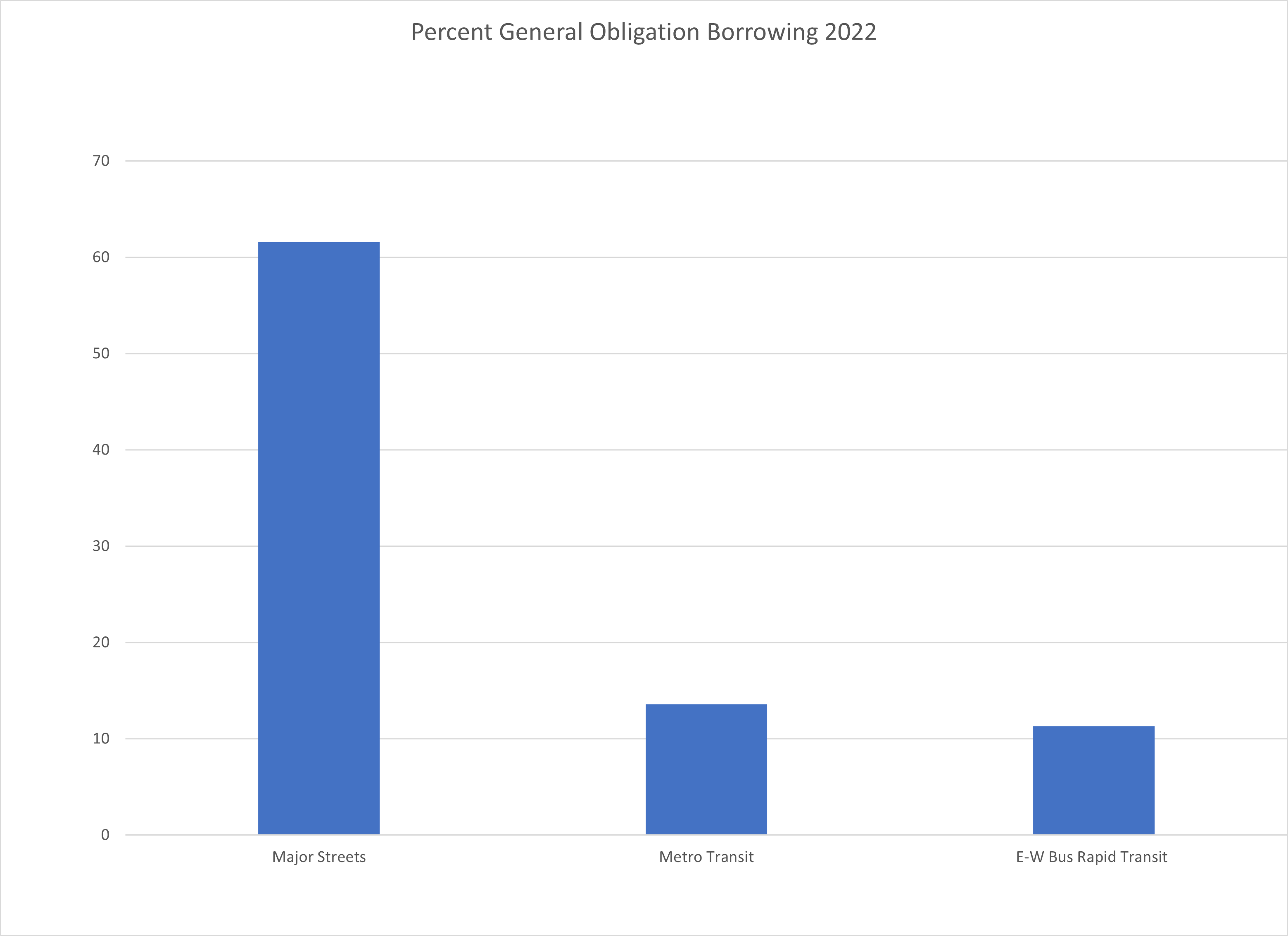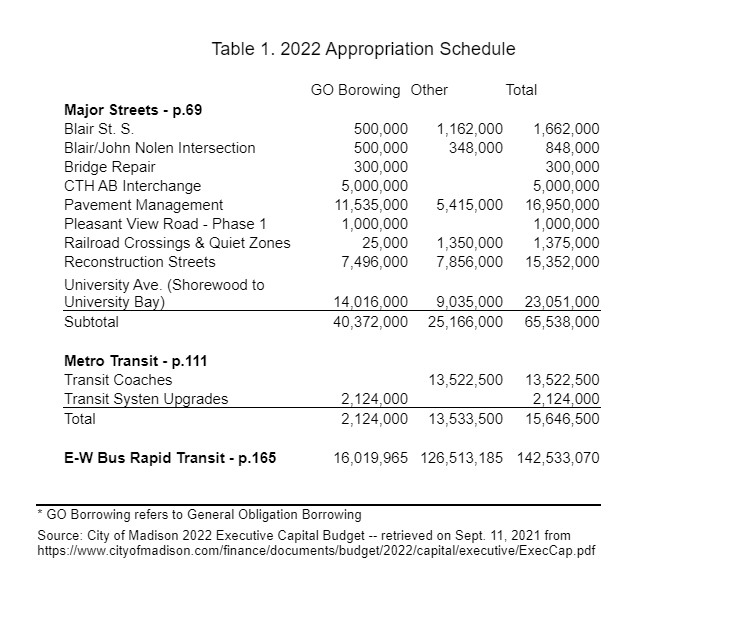Budgeting a Transportation Future in 2021
Susan De Vos | September 13, 2021


Madison's Mayor recently released her proposed capital budget for next year (2022). Often about a fifth of the total budget, it is that part of the budget where large-scale infrastructure-like items get listed. This year's capital budget of perhaps $355 million is more than twice as large as the capital budget for the previous year and not quite twice the estimated size of the budget in the following year (for 2023). According to one local news article, one reason for its unusual size is "the $166 million price tag for the first phase of BRT [Bus Rapid Transit] ..." The article also observed near the end that "The city's annual debt costs have risen from 12% of the general fund budget in 2011 to roughly 17% in the current year and about the same in 2023. This caused me to pause, not because I do not have serious questions about the financing of the Bus Rapid Transit scheme here in Madison (I do), but because those questions pertain to day-to-day operational expenses, not capital costs. Furthermore, I had been led to believe that much of BRT capital costs would be paid by federal grants, our extra vehicle registration fee, and other non-borrowed money (such as in-kind land contributions). The article did not make a direct association between the budget's unusual size and our debt burden but a reader might plausibly do so. This note makes it clear, using facts and figures from the budget document itself, that no causal association exists. Rather, the city has been borrowing for "major street" projects at an unsustainable level for years, causing a rise in our overall debt even as we scrimp on other public goods such as ice rinks and golf courses. Just as you know that behind the glitz, it is really the banks that own all those shiny new cars on the road, I watch with horror at the amount of money the city spends and borrows every year on building, expanding, extending, and maintaining its huge road network – a network of nearly 1,800 miles of traffic lanes. The message has to be made repeatedly that we cannot afford all the roads while public transportation is much more in line with the economics of both households and the larger community. Assessing one year's budget for items that should be assessed over a lifetime of decades is obviously of limited value. For instance, streets may be constructed to last 50 years and any year in between can downplay the true cost. But as superficial as my analysis is, it can at least debunk the idea that installing Bus Rapid Transit is contributing to our debt as much as major street work. Consider figures in the following table taken from the 2022 Executive Capital Budget for instance. They are the 2022 appropriations for major streets, Metro Transit and the East-West Bus Rapid Transit line, further itemized by specific project on the one hand and amount of the appropriation attributable to borrowing on the other. 
Metro Transit lists two items for a total of $15,646,500 – new coaches and upgrades to the transit system. Fourteen percent, $2,124,000, will be borrowed The E-W Bus Rapid Transit line in 2022 will cost $142,533,070. A little over eleven percent of that, $16,019,865, will be borrowed. In sum, the engineering department's "major streets" initiative is estimated to borrow $40.3 million next year, Metro Transit $2,123,000 and the E-W Bus Rapid Transit line $16,019,965. Most of the borrowing comes from "major streets," not Bus Rapid Transit. As a percent of their total costs, borrowed money comprises 61.6%, 13.6% and 11.2%. Ironically, in a possible attempt to develop a more fiscally responsible transportation system to what exists currently, the 2022 Capital Budget includes the development of a starter Bus Rapid Transit line for $142,533,070, most of which will be paid for without borrowing. But instead of praising its low level of borrowing, a recent newspaper article attributed part of the bloat of this year's budget to the hefty price tag of that line. Could it be considered scapegoating to then lament the Budget's high level of borrowing compared to a decade earlier? |